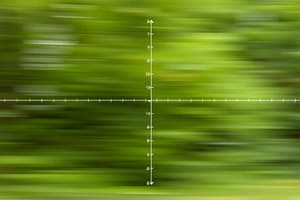Podcast
Questions and Answers
What is the definition of displacement in the context of motion?
What is the definition of displacement in the context of motion?
- The total distance covered by an object
- The time taken for an object to move from one point to another
- The shortest distance between the initial and final positions of an object (correct)
- The speed of an object in a given direction
In the example given in the text, what was the magnitude of displacement when the object moved from point O to A?
In the example given in the text, what was the magnitude of displacement when the object moved from point O to A?
- 110 km
- 60 km (correct)
- 85 km
- 25 km
How is displacement different from distance traveled?
How is displacement different from distance traveled?
- Displacement considers only direction, while distance traveled considers magnitude (correct)
- Displacement is calculated using speed, while distance traveled is not
- Displacement is a scalar quantity, while distance traveled is a vector quantity
- Displacement is always equal to distance traveled
In Activity 8.3 described in the text, what are participants instructed to do when measuring the displacement?
In Activity 8.3 described in the text, what are participants instructed to do when measuring the displacement?
What type of device in automobiles shows the distance traveled by a vehicle?
What type of device in automobiles shows the distance traveled by a vehicle?
Can an object that has moved through a distance have zero displacement?
Can an object that has moved through a distance have zero displacement?
What does it mean when an object is said to be in uniform motion?
What does it mean when an object is said to be in uniform motion?
In the context of motion, what can be said about the magnitude of displacement compared to the distance traveled by an object?
In the context of motion, what can be said about the magnitude of displacement compared to the distance traveled by an object?
Which of the following scenarios describes non-uniform motion?
Which of the following scenarios describes non-uniform motion?
If an object covers 5 meters in each second, what type of motion is it classified as?
If an object covers 5 meters in each second, what type of motion is it classified as?
What concept states that displacement cannot be zero?
What concept states that displacement cannot be zero?
How is displacement different from distance traveled?
How is displacement different from distance traveled?
What is the magnitude of the displacement when the object moves from O to A and then back to C?
What is the magnitude of the displacement when the object moves from O to A and then back to C?
When the object travels back to O, why is the distance covered 120 km even though the displacement is zero?
When the object travels back to O, why is the distance covered 120 km even though the displacement is zero?
What is the total path length covered by the object from O to C through A and B?
What is the total path length covered by the object from O to C through A and B?
When does the magnitude of displacement become equal to zero for the object during its journey?
When does the magnitude of displacement become equal to zero for the object during its journey?
What is the key difference between distance and displacement in describing motion?
What is the key difference between distance and displacement in describing motion?
In which case would the magnitude of displacement be equal to the total path length covered by the object?
In which case would the magnitude of displacement be equal to the total path length covered by the object?


